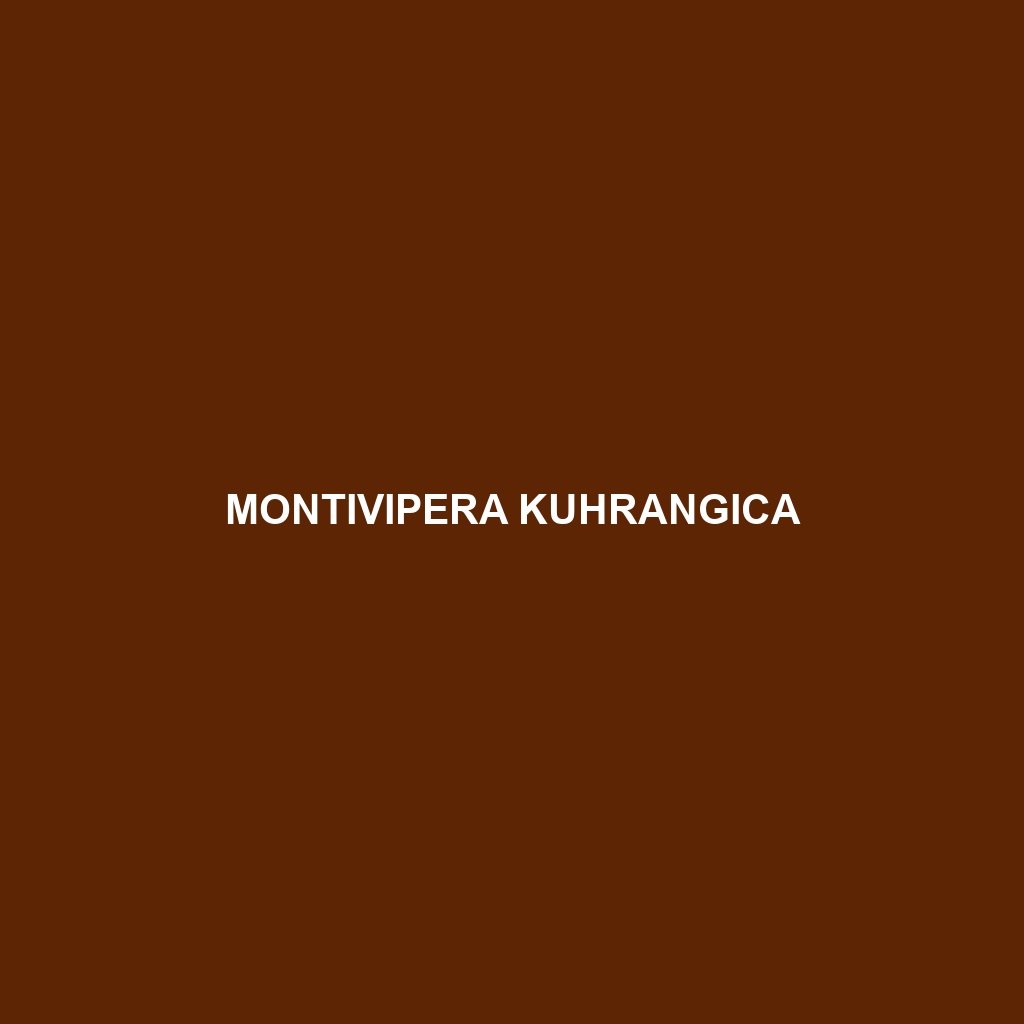Common Name
Montivipera kuhrangica
Scientific Name
Montivipera kuhrangica
Habitat
Montivipera kuhrangica primarily inhabits mountainous regions of the Alborz range in northern Iran. This species thrives in rocky outcrops and cliff faces adjacent to shrubland and sparse forests. The climate in this area is predominantly temperate with cold winters and warm summers, ideal for the cold-blooded nature of M. kuhrangica. Its habitat features dry habitats interspersed with occasional rainforests, which provides various microhabitats for shelter and hunting. This snake has adapted well to this rugged environment, involving minimal human disturbance while relying on the availability of small mammals for sustenance.
Physical Characteristics
Montivipera kuhrangica is recognized for its striking physical appearance. Adult individuals can grow up to 70-90 cm in length, with females typically being larger than males. The coloration varies from dark brown to olive green, complemented by lighter, zigzag-shaped patterns running down their back, providing effective camouflage against the rocky terrain. One of the distinguishing features of this species is its robust body and relatively large triangular head, typical of many vipers, which aids in its predatory activities. The scales are keeled, aiding in grip on rocky surfaces, while their vertical slit pupils enable effective nocturnal hunting.
Behavior
Diet
Montivipera kuhrangica is a carnivorous species, primarily feeding on small mammals, lizards, and occasionally birds. Its hunting strategy involves ambush tactics, utilizing its excellent camouflage to blend into the rocky surroundings. The snake strikes quickly with its fangs to inject venom into its prey, paralyzing them effectively. The diet must be well balanced to meet their energy needs, especially during colder months when they rely on stored fat reserves.
Reproduction
The reproductive cycle of Montivipera kuhrangica typically occurs during late spring to early summer. Mating can occur following a courtship display in which males compete for female attention. After a gestation period of approximately 3-4 months, females give birth to live young, with litters ranging from 5 to 15 offspring. The neonates are born fully developed and can immediately start hunting independently. Parental care is minimal; once born, the young must fend for themselves, immediately adapting to their environment.
Conservation Status
The conservation status of Montivipera kuhrangica is currently classified as ‘Vulnerable’ by the International Union for Conservation of Nature (IUCN). Habitat loss due to urbanization and agricultural expansion poses significant threats. Especially concerning is the illegal pet trade and persecution due to fear of snakes. Conservation efforts are focused on habitat preservation and increasing public awareness about the ecological importance of this species, aiming to mitigate the human-wildlife conflict.
Interesting Facts
One fascinating fact about Montivipera kuhrangica is its capacity for thermal regulation. This snake can effectively utilize thermoregulation by choosing basking spots that provide optimal body temperature for digestion and activity. Although primarily terrestrial, they are also proficient climbers when necessary, using this ability to escape predators. Their lethal venom not only aids in hunting but also serves as a defense mechanism against potential threats.
Role in Ecosystem
Montivipera kuhrangica plays a critical role in its ecosystem as a predator, controlling rodent populations that could otherwise overpopulate and cause ecological imbalances. This species contributes to the health of its environment by regulating prey populations and participating in the food web. Additionally, it serves as a food source for larger predators, thereby forming an essential part of the biodiversity in its habitat. The presence of M. kuhrangica is an indicator of ecosystem health, reflecting the balance between different species and the need for appropriate conservation measures.
